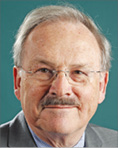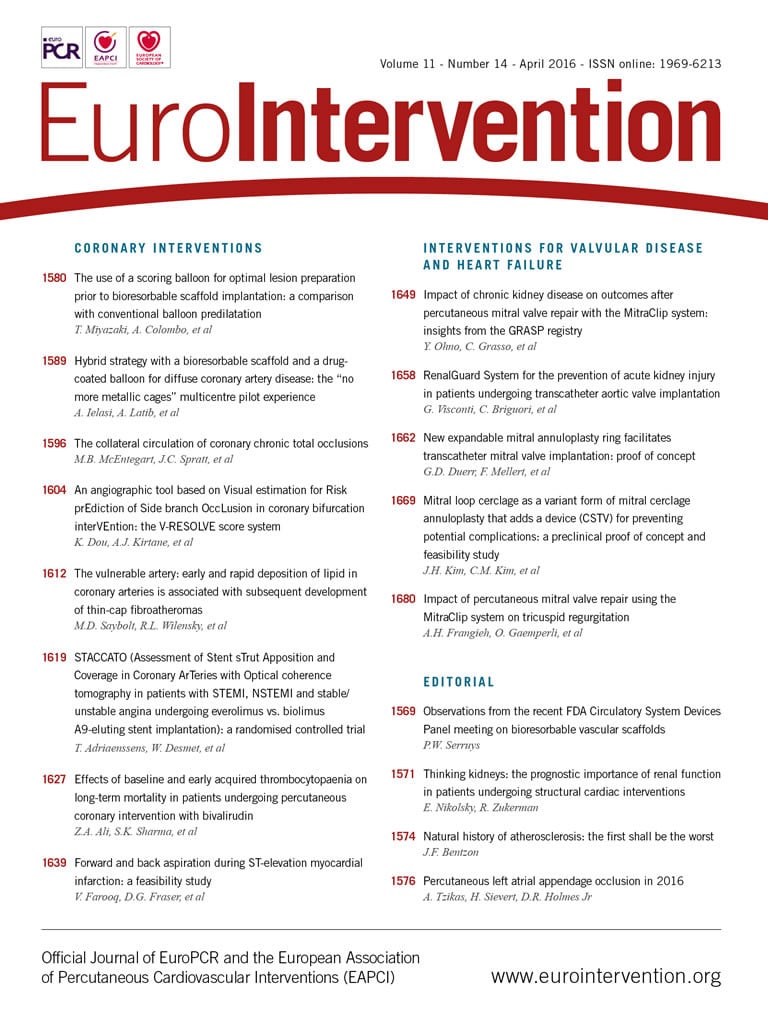
The first FDA panel that I attended was in 1994. That year, the meeting of this particular panel took place in the ballroom of a Holiday Inn Hotel close to Washington, DC. Eric Topol was the Chairman and he was surrounded by individuals who represented physicians, patients, nurses and industry. Using now defunct overhead projectors and slides, I presented the BENESTENT trial and Martin Leon presented the STRESS trial. We were accompanied by, amongst others, Donald Baim. The presentations went very well until I realised that I had left my concluding slide on the plane. This mishap triggered hilarious reactions at a moment of high tension due to a short episode of confrontation when Donald Baim alluded to a non-randomised long-term study in 51 patients – Martin Leon was needed to calm down the rising emotions. Nevertheless, at the end of the day the device was unconditionally approved. The reader should realise that, prior to this particular panel, there had been six other attempts by Julio Palmaz and Richard Schatz by themselves to convince the FDA in the absence of randomised trial data. Having read the minutes of these previous attempts, we elected not to include Julio Palmaz or Richard Schatz in our representations to the FDA in order to increase our chances of success.
I must say that 22 years later the atmosphere at the FDA panel meeting was much more professional, much more organised. Still, as a naive European cardiologist, invited to support and testify if necessary for an American panel, a few observations remain with me. First, it was a military officer, Commander Dimitrus Culbreath, who opened the meeting in a somewhat grandiose manner. Hereafter, employees of Abbott presented the randomised ABSORB III trial, an American trial designed to obtain post-market approval. These data were in turn supported by some additional data from the EU, China and Japan and, I must say, the presentations were objective with a general impression of efficacy and safety.
These presentations, which were certainly pleasant, concluded the first morning. In the afternoon, Andrew Farb, representing the FDA, gave an outstanding, well organised presentation with repeated comparisons side by side illustrating to the audience that the scaffold performs well compared to metallic stents. However, there was one patient subset in which the device was not performing well, namely where the vessel diameter is <2.25 mm. To my surprise, it was mentioned that an eyeball assessment of the vessel size should be performed first and then QCA, something which I believe is unrealistic and inappropriate. My recommendation is always to use QCA and/or intravascular imaging for vessel size assessment in this patient subset and therefore I would not be surprised to see in the final labelling that quantitative coronary angiography (QCA) or intravascular imaging is deemed mandatory for this subset.
Following this presentation came the emotional moment when eight members of the public, four patients and four physicians, gave their own comments to the panel. Their comments were either of an emotional, scientific or visionary character. One speaker was in fact one of the first patients to receive the bioresorbable scaffold, another mentioned that their family had received multiple metallic stents and finally had access to bioresorbable scaffolds, and another lady was particularly emotional after having received this technology for the second time. Amongst the physicians, Ron Waksman was quite eloquent concerning the need for bioresorbable scaffolds. From Europe, Tommaso Gori explained that bioresorbable scaffolds are part of his practice, provided that he and his team spend adequate time in preparing and post-treating the lesion properly. In my presentation, I reflected on the evolution of coronary intervention over the last 30 years moving from balloon angioplasty to bare metal stents and on to drug-eluting stents and now bioresorbable scaffolds. In so doing, I tried to convince the audience that there was no perfect instrument but a continuing long progression dictated by the logic of biology in terms of the delicate structure of the coronary artery which is not the perfect receptacle for a foreign body, be it a stent or a scaffold.
We broke for coffee and then it was time for the FDA panel vote. The FDA panel consisted of 16 members of whom 10 had voting rights with, as Panel Chair, Richard Page. The non-voting members included a representative for the patient, a representative for the consumer, and a representative for the industry. Also excluded from voting were Bram Zukerman and Commander Culbreath, representing the FDA. The voting members included well-known physicians such as Jeffrey Brinker from the Johns Hopkins Hospital, George Vetrovec from the Medical College of Virginia and Ralph Brindis from the Oakland Kaiser Medical Center.
Each member had an electronic device with which to cast his vote under the supervision of Commander Culbreath. Three questions were posed – is the device safe? Is the device efficient? Is the risk/benefit of the device acceptable? Nine panellists felt that the device was safe while one disagreed. The panel, however, voted unanimously that the bioresorbable vascular scaffold was an effective treatment based on efficacy data from the clinical trials. With respect to risk/benefit, nine panel members felt the benefits of the bioresorbable vascular scaffolds outweighed the risks, with one panellist abstaining.
Seated in the first two rows in the ballroom were Gary Johnson, Gary Thompson and Richard Rapoza, all from Abbott. I have rarely seen people so agitated in anticipation of the results. When the results were revealed, I was really touched to see solid people such as Richard and the two Gary’s almost overcome with emotion. These sincere emotions were a reflection of the many ups and downs, requiring endless resilience and confidence to continue to work in a complex field which was clearly not plain sailing. My last observation of that day is a little peculiar. At the conclusion of the procedure, each voting member actually disclosed their vote, an action which for me promotes the true values of transparency.
Whilst acknowledging that the EU parliament is trying to improve and speed-up our CE mark process as well as focalising the many European regulatory bodies into selected dedicated European centres of regulatory expertise, the goal of this editorial is not simply to give the reader some insights into how an FDA panel works, but also to illustrate how the FDA is on its way to surpass the EU’s CE mark process. The FDA has now simplified a previously over bureaucratic process and, most importantly, sped this process up.

